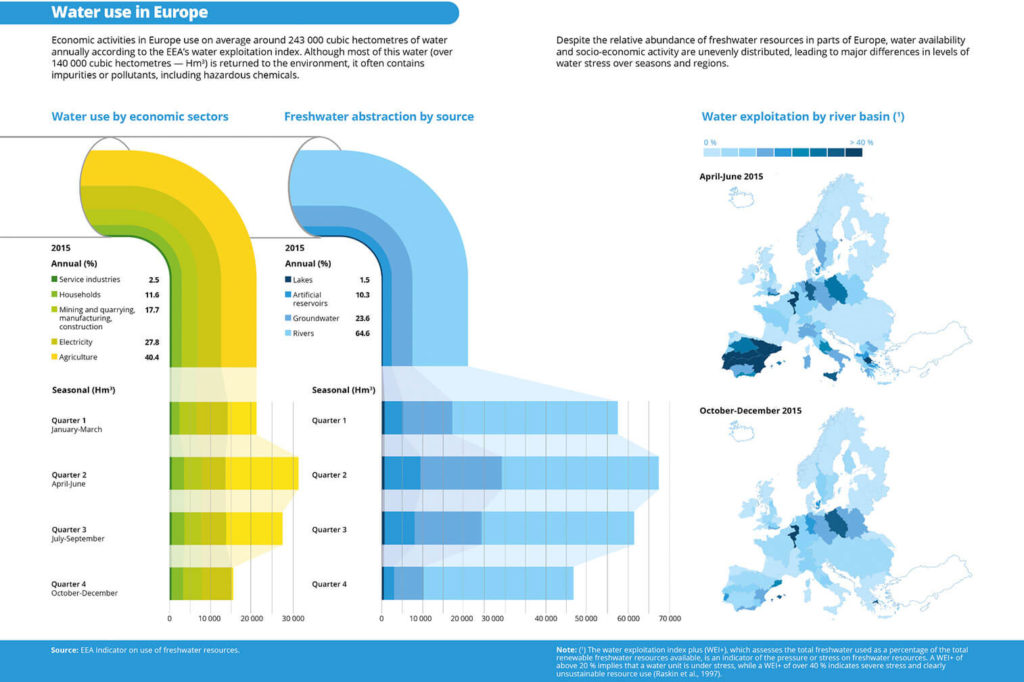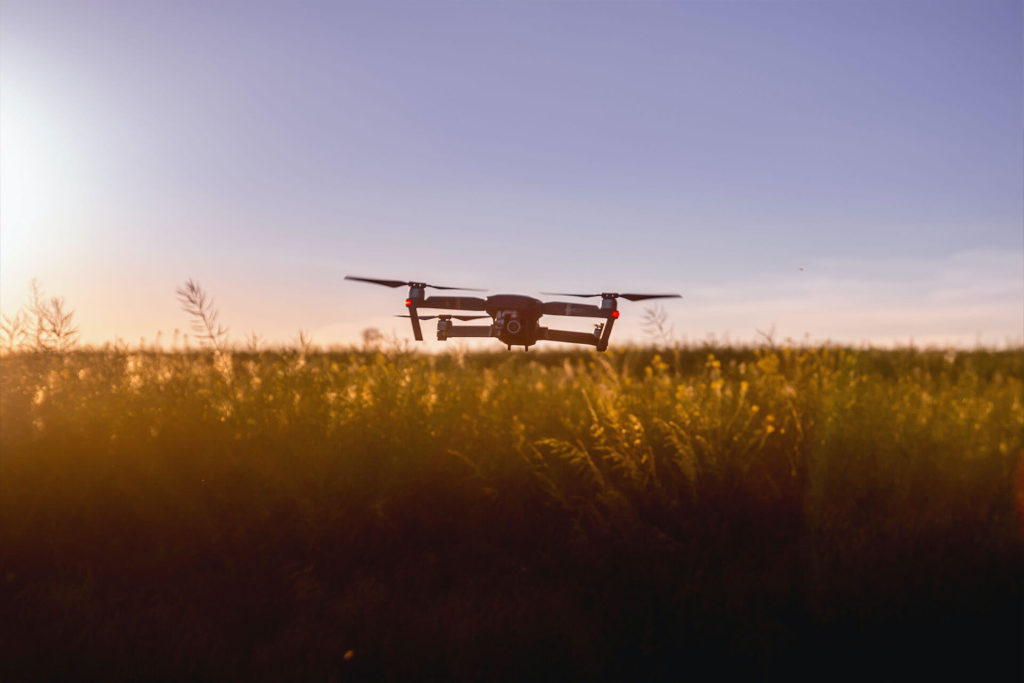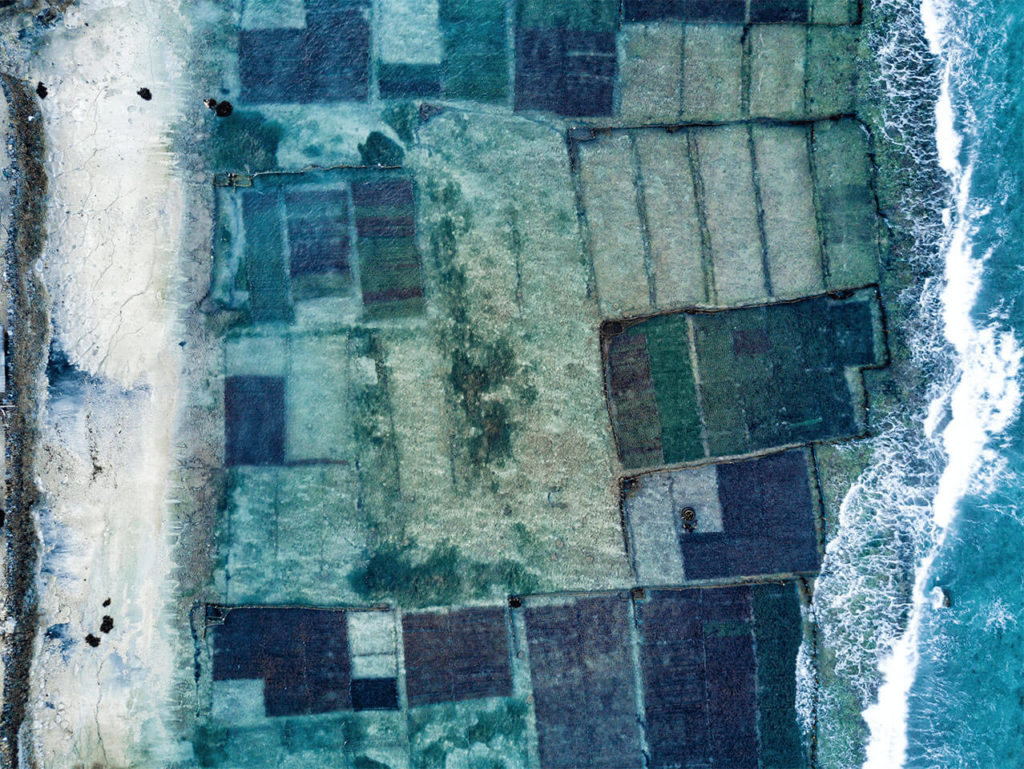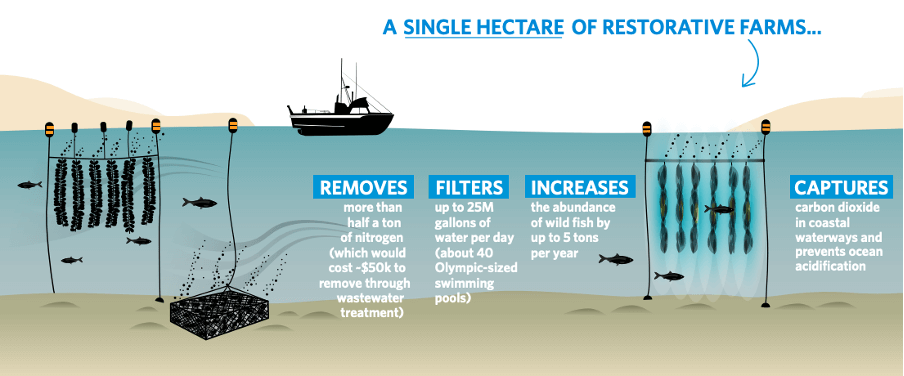Farming in a Changing Climate
To meet increasing global demand, we need to find more efficient means and methods of growing food.
Throughout most of human history, Europe has known a favorable climate. Its land has been arable, has had a temperate climate and a seemingly endless supply of water flowed across the continent. Unfortunately for Europe, in this case, history is not repeating itself. Like for the rest of the world, Europe’s climate is changing. A report by the Intergovernmental Panel on Climate Change (IPCC) has found that the temperature rise in Europe exceeds the global average, the frequency of extreme heat will continue to increase, and its sea levels will rise, regardless of the level of global warming.
Today, over 100 million Europeans are facing water stress, according to the European Environment Agency (EEA). This number is expected to increase as droughts and extreme heat become more frequent. According to the EEA, 40% of freshwater in Europe is used in agriculture. Couple that with the projection made by the World Resources Institute that with current agriculture efficiency we would need to clear all of the world forests by 2050 to feed the 10 billion mouths on our planet and it is evident that our current ways of growing food are unsustainable.
New ways of growing our food are needed. Current agriculture methods need to be refined and new sources need to be tapped into.

Right on target
With the philosophy ‘’The best way to save water is to never use it’’ in mind we look at the first approach to make our ways of farming our food more sustainable: precision agriculture. With the help of technology, water and herbicide use can see a reduction from 20% to 40%, without losing yield and in some cases even increasing it. By using water sensors to measure the level of moisture in the soil, soil maps to have an overview of the type of soil and thus what is needed, and weather stations to measure air temperature and humidity, the farmer knows exactly how much water is needed when and where. All of which can be accessed from a smartphone.

A farm from the company Quinta da Cholda in Portugal takes it a step further by implementing other precision agriculture practices next to the ones mentioned above such as using tele-guided tractors to stay on target and minimize overlap in spray, using anti-drift nozzles to reduce the effect of the wind on spray, using productivity maps to selectively spray fertilizer where it is needed most, and using soil data to spray herbicides selectively only in the soil that the weeds grow. Not only does this have an environmental benefit, it also saves the farmer costs which makes this attractive even for the less environmentally motivated farmers.
An added benefit is that this method will not only reduce the quantity of water used, it will also increase the quality of water that is not used. This is because fertilizer, pesticides and herbicides are a major threat to water quality and coral reefs and marine life of the coast. And a reduction in their use would mean that less of the stuff would get into our precious water.
Going with the flow
When life gives you lemons, you make lemonade. Right now, life is giving us salt water, so why not make saltwater crops?
Saltwater intrusion is becoming ever more relevant. Globally around 1.1. billion hectares of soil is salt affected. This number is set to increase as climate change disrupts weather patterns and sea levels rise further. A 2020 review of studies shows that salinity intrusion costs range from € 577 – 610 million per year in Europe and are projected to increase significantly with sea-level rise over time.
Saltwater intrusion poses a threat to food security and economic activity. It does however also create an opportunity to embrace this threat and create a more resilient food system that has been adapted to climate change while being more environmentally sustainable as the potential is there to significantly reduce the amount of freshwater used.
One of the organizations that has proven saline agriculture works is the nonprofit Salt Farm Foundation (SFF). They have done extensive research and field testing into various salt-tolerant crops and saltwater irrigation in field labs based in the Netherlands, Pakistan and Bangladesh.
SFF has tested a variety of crops while using salt water in their tests. The level of salinity in the soil and water is expressed in deciSiemenens per meter (dS/m). Sea water has a salinity level of 58 dS/m while fresh water has 0.8 dS/m.
In their field testing SFF planted potatoes, carrots, onions, cauliflower, cabbage, kohlrabi and grass pea to determine their salinity tolerance. The crops that still had a 90% yield with a 5-7 dS/m compared to freshwater crops were varieties of potato, carrot and cabbage. This is likely due to their ancestorial background in being coastal crops. 5-7 dS/m represents medium brackish water which is a mix of freshwater and seawater.
This shows that there is potential to grow crops in salt-affected lands and even by using saltwater while maintaining most of its yield. This means that there is a chance to save on fresh water as the seawater can be mixed with freshwater while maintaining food security in an ever-changing climate.

Seaweed farming
There is one type of organism that doesn’t care much about the level of salt in the water: seaweed.
Seaweed farming has been practiced Asia for over 1000 years and has regained interest in other parts of the world as a new source of nutrition.
Methane emissions could be reduced by up to 80% by adding 100g of seaweed to it
Nichola Daunton, Euro News Green
Most of us are familiar with seaweed being used for sushi, but did you know that seaweed is already being used in cosmetics and medicine? Seaweed can also be used as a biofuel or serve as a replacement for soy in vegetarian meat, a crop that is damaging our planet as it is often grown on deforested lands.. The seaweed can give vegetarian meat a ‘’meaty’’ feel due to its texture. Lastly, seaweed can be used for animal feed. A Swedish start-up has created a supplement from seaweed that can reduce methane emissions by 80% by adding 100g of seaweed to the animal feed. This could have a significant impact on global GHG emissions as livestock produces 32% of human-related methane emissions.
Seaweed farming not only has a myriad of benefits and applications once harvested but also during the cultivation process. Seaweed requires no fresh water, feed, pesticides or fertilizer. It sequesters carbon, creates oxygen even in ocean dead zones, provides habitat for marine life and can grow up to 10% per day. The WWF and other sustainable organizations praise it for its potential to fight climate change and support local communities while being sustainable and providing a secure food source.

So, what’s the catch? So far, it seems like there are few. More research is needed to measure the effect seaweed farming has on the habitat surrounding it as it can offset the natural balance. The type of seaweed farming that the WWF and others support is restorative seaweed farming, an approach that gives back to nature while maintaining its benefits. The danger is that we will treat sea farms the same way as its landlocked cousin, by exploiting it and pushing it to its limit. This time has to be different.
Policy makers need to get ahead of the curve and create regulations and healthy incentives that will allow for the exploration of seaweed farming while staying within the boundaries of our planet. Aquaculture has the potential to tackle our problems of water- and food stress and carbon capture, if done the right way.
Outro
The world is moving towards a more sustainable world. Although great progress has been made, we are not moving fast enough. Therefore, not only do we need to continue to reduce our emissions to limit climate change we also need to adapt to the already changing climate that is here.
The building blocks of life are air, water and nutrition. Right now, we are putting a strain on each one of them, with severe consequences. By changing our ways in one of the most demanding and central sectors on the planet we can provide for ourselves without depleting the natural resources and even give back so it can thrive once more.